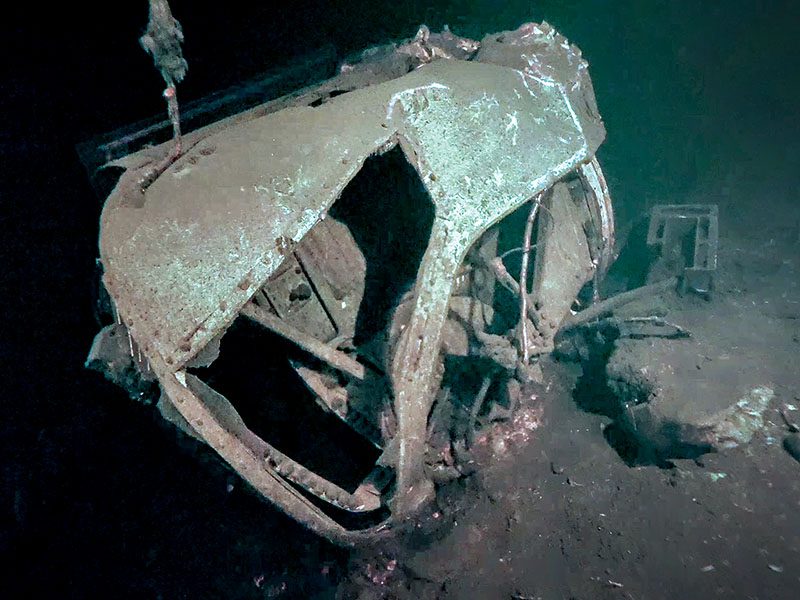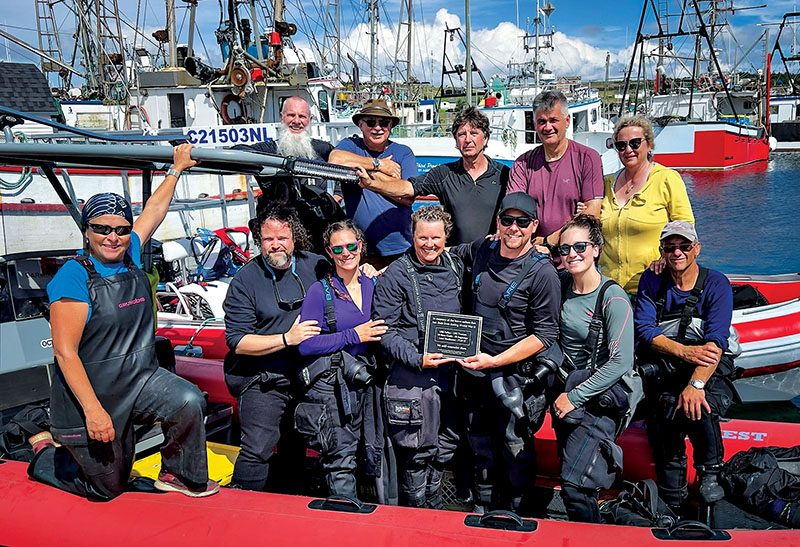The small Royal Canadian Air Force (RCAF) field at Gander, Newfoundland, gained notoriety as the airport to which dozens of international flights were diverted after the terrorist attacks on Sept. 11, 2001. The townspeople’s warmth and hospitality are immortalized in books, films, and the award-winning Broadway musical Come from Away.
Before that fateful date, Gander was instrumental in the World War II Battle of the Atlantic. Dozens of Consolidated B-24 Liberator bombers from Gander patrolled North America’s eastern coast, hunting for and engaging German U-boats. The heavily armed aircraft escorted naval convoys to protect them from the stealthy submarines.
With a 5,000-pound (2268 kilograms) payload, the four-engine Liberators of the RCAF’s No. 10 (Bomber Reconnaissance) Squadron were capable of long-range patrols and became known as the North Atlantic Squadron. Their regular missions took them a thousand miles offshore to hunt for the German wolfpacks (coordinated convoy attacks by multiple submarines) that roamed between Newfoundland and Iceland. They are credited with sinking three U-boats.
One of the squadron’s most critical missions was protecting the strategically important iron ore mines at Bell Island in Newfoundland’s Conception Bay. This high-quality ore was crucial to the world’s shipbuilding industry, particularly for Allied warships.
In September 1942 the U-513 torpedoed two fully loaded cargo ships: the Canadian Lord Strathcona and British Saganaga. Two months later the U-518 attacked and destroyed part of the loading pier and two more vessels: the Canadian Rose Castle and Free French P.L.M. 27. Known as the Battle of Bell Island, it was one of the only times that Germany attacked North America during World War II. Soon after, Newfoundlanders placed submarine nets across Conception Bay, and the RCAF increased B-24 Liberator patrols in the area, halting further incursions.
On Aug. 6, 1943, Wing Cmdr. John Maitland Young took charge of the 10 (BR) Squadron, not knowing that his new role would last less than a month. On Sept. 4, 1943, he and crew members Squadron Leader John G. MacKenzie (a physician), Flying Officer Victor E. Bill, and Leading Aircraftman Gordon Ward flew Liberator 589D for a routine medical test flight to study the effects of altitude and vibration on aviators’ ears. Soon after 589D lifted off at Gander, however, the plane experienced engine failure. Witnesses reported that it made a slow turn and barrel-rolled into the lake, just across the road from the end of the runway. There were no survivors.
Canadian hard-hat divers found the aircraft on a ledge in the lake and tried to attach cables to the fuselage. When recovering MacKenzie’s remains, however, the plane slipped off the ledge to a depth the divers could not reach. A naval demolitions team considered dropping depth charges that might open the fuselage and allow the remaining bodies to float free, but after 12 days the military declared the operations too dangerous to continue because of the extreme depth, cold water, and poor visibility. The wreckage and three souls were lost to history.
Former Gander resident Tony Merkle took a particular interest in the aircraft’s history and for nearly a decade searched the lake for wreckage, but his bottom-finder’s low-resolution display could not detect the airplane’s contours. He joined the board of directors of the Shipwreck Preservation Society of Newfoundland and Labrador (SPSNL) to get assistance from a larger team and advance the project.
In July 2022, using approximate latitude and longitude coordinates for the wreck from the RCAF crash report, board member and marine geomatics professional Kirk Regular conducted a complex multibeam sonar survey that provided initial 3-D images and the plane’s suspected location. Archeologist and SPSNL President Neil Burgess obtained the necessary archaeology permits from the Newfoundland provincial archaeology office and began assembling a team to dive the site.
On Sept. 5, 2022, 79 years and a day after the crash, Royal Canadian Geographical Society (RCGS) Fellows Russell Clark, Rick Stanley, and I led an international dive team with RCGS to confirm the B-24’s location. We located the wreckage on a ledge between 120 and 155 feet (36,6 and 47,2 meters) and completed six technical dives to photograph and survey the site. The dark, tea-colored water presented challenging conditions with a temperature of 38°F (3,3 °C) and less than 3 feet (91 centimeters) of visibility. Our first view of the aircraft’s landing gear was through camera viewfinders shortly before we could see the wreckage with our own eyes.

The 66-foot-long (20 meters) aircraft with a wingspan of 110 feet (33,5 meters) was upside down and badly crumpled, with several parts torn from the fuselage. At 120 feet (36,6 meters), French technical diver Luc Michel tied a heavy line onto the landing gear to allow photographers and videographers to document the site and find identifying marks to confirm the plane’s identity.
Canadian cinematographer Maxwel Hohn captured some of the first definitive images of the aircraft. “I tried to cover as much of the wreckage as possible,” he said, “but didn’t know what I had shot until we reviewed the footage later.” The limited visibility was so challenging that Burgess, my dive partner, recalls losing sight of my 33,000-lumen lights despite being mere feet from my camera.
After six dives the team carefully combed through video files, looking for distinctive marks on the fuselage, wings, and dual tail stabilizers. A visit to Gander aircraft enthusiast Robert Maher’s workshop, where he is restoring a plane from the same squadron, allowed the team to match the tail markings and unique wing navigational lights with their photos and video footage, positively confirming the plane’s identity.
Approximately 18,500 Liberators were built at a blistering pace for use in World War II, but only about a dozen remain. The Canada Aviation and Space Museum in Ottawa has a restored RCAF Liberator on display.
Expedition Team

Members of the team that located the Liberator 589D include Jill Heinerth, RCGS Fellow and Explorer-in-Residence; Rick Stanley, Ocean Quest Adventures, RCGS Fellow; Russell Clark, cinematographer and editor of Diver magazine, RCGS Fellow; Debbie Stanley, Ocean Quest Adventures; cinematographer Maxwel Hohn; photographer Tiare Boyes; researcher and exploration diver Tony Merkle; SPSNL President Neil Burgess; divers Agata Koniecek, Greg Koniecek, Luc Michel, Krystal Janicki, Tom Howarth, Chris Broadbent; and Robert McClellan, media support and research.
Explore More
Learn more about the discovery of the lost Liberator in these videos.
© Alert Diver — Q1 2023